What else could the Higgs be?
Updated: 2012-10-30 16:00:00
 On July 4, scientists around the world popped open champagne bottles and toasted the culmination of nearly five decades of research. They had discovered a new particle, one that looked awfully similar to the long-sought Higgs boson.
The Higgs boson has for decades been the last missing piece of the Standard Model of particle physics. But even if the new particle completes the puzzle, some of its pieces still refuse to fit.
On July 4, scientists around the world popped open champagne bottles and toasted the culmination of nearly five decades of research. They had discovered a new particle, one that looked awfully similar to the long-sought Higgs boson.
The Higgs boson has for decades been the last missing piece of the Standard Model of particle physics. But even if the new particle completes the puzzle, some of its pieces still refuse to fit.
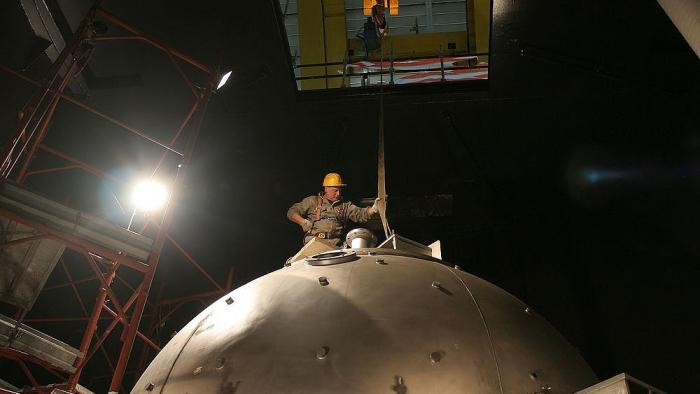 A treasure trove of dark-matter detectors rests within the deep reaches of Italy's Apennine Mountains as part of Gran Sasso National Laboratory. The mountains shield the detectors from cosmic rays, making them highly sensitive to dark-matter particles.
A treasure trove of dark-matter detectors rests within the deep reaches of Italy's Apennine Mountains as part of Gran Sasso National Laboratory. The mountains shield the detectors from cosmic rays, making them highly sensitive to dark-matter particles.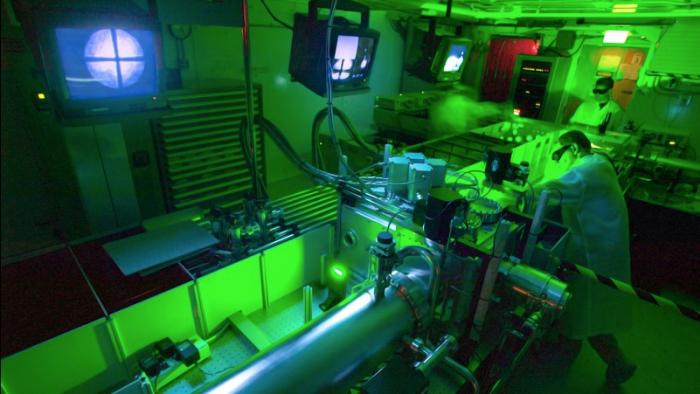 In Wim Leemans’ lab at Lawrence Berkeley National Laboratory sits one of the world’s most advanced R&D accelerators. By pushing electrons forward on the crest of plasma waves, the accelerator is capable of accelerating electron bunches from an energy of 0 to 1 billion electronvolts in just 3 centimeters. But, until now, Leemans and his team were unable to quantify exactly how uniform that acceleration was within a bunch of electrons. This measurement is especially important for one of the most promising applications of plasma accelerators: free-electron lasers.
In Wim Leemans’ lab at Lawrence Berkeley National Laboratory sits one of the world’s most advanced R&D accelerators. By pushing electrons forward on the crest of plasma waves, the accelerator is capable of accelerating electron bunches from an energy of 0 to 1 billion electronvolts in just 3 centimeters. But, until now, Leemans and his team were unable to quantify exactly how uniform that acceleration was within a bunch of electrons. This measurement is especially important for one of the most promising applications of plasma accelerators: free-electron lasers. DonorsChoose is a great program that lets people give small (or large, if that’s how they roll) charitable donations targeted at specific classrooms and educational programs around the country. We have participated frequently in the past, but this year we didn’t quite get our act together. But it doesn’t matter who sets up the donors [...]
DonorsChoose is a great program that lets people give small (or large, if that’s how they roll) charitable donations targeted at specific classrooms and educational programs around the country. We have participated frequently in the past, but this year we didn’t quite get our act together. But it doesn’t matter who sets up the donors [...]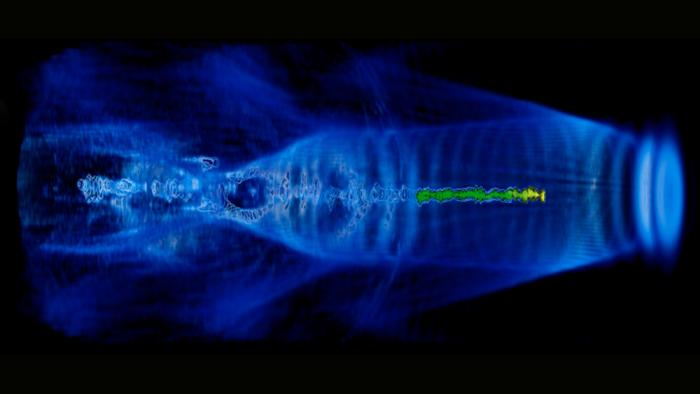 Seeking less costly, more efficient means of particle acceleration, physicists are developing new types of machines that zip particles to high energies in short distances. One promising method harnesses the power of plasma, accelerating electron bunches on the crest of plasma waves. Physicists recently discovered a way to measure the focus of such a beam, despite the fact that the plasma would melt traditional diagnostic tools.
Seeking less costly, more efficient means of particle acceleration, physicists are developing new types of machines that zip particles to high energies in short distances. One promising method harnesses the power of plasma, accelerating electron bunches on the crest of plasma waves. Physicists recently discovered a way to measure the focus of such a beam, despite the fact that the plasma would melt traditional diagnostic tools. : Log in Email Password Remember me Your login is case sensitive I have forgotten my password Register now Activate my subscription Institutional login Athens login close My New Scientist Home News In-Depth Articles Blogs Opinion TV Galleries Topic Guides Last Word Subscribe Dating Look for Science Jobs SPACE TECH ENVIRONMENT HEALTH LIFE PHYSICS MATH SCIENCE IN SOCIETY Cookies Privacy Orphaned stars linger in dark matter haloes 20:22 24 October 2012 Space Joanna Carver , reporter Image : NASA JPL-Caltech Outcast stars stripped away by galaxy mergers may be trapped in the cocoons of dark matter that surround galaxies . If so , these stars would explain seemingly random smatterings of light in the infrared sky , which should illuminate studies of how the first galaxies formed and . grew The
: Log in Email Password Remember me Your login is case sensitive I have forgotten my password Register now Activate my subscription Institutional login Athens login close My New Scientist Home News In-Depth Articles Blogs Opinion TV Galleries Topic Guides Last Word Subscribe Dating Look for Science Jobs SPACE TECH ENVIRONMENT HEALTH LIFE PHYSICS MATH SCIENCE IN SOCIETY Cookies Privacy Orphaned stars linger in dark matter haloes 20:22 24 October 2012 Space Joanna Carver , reporter Image : NASA JPL-Caltech Outcast stars stripped away by galaxy mergers may be trapped in the cocoons of dark matter that surround galaxies . If so , these stars would explain seemingly random smatterings of light in the infrared sky , which should illuminate studies of how the first galaxies formed and . grew The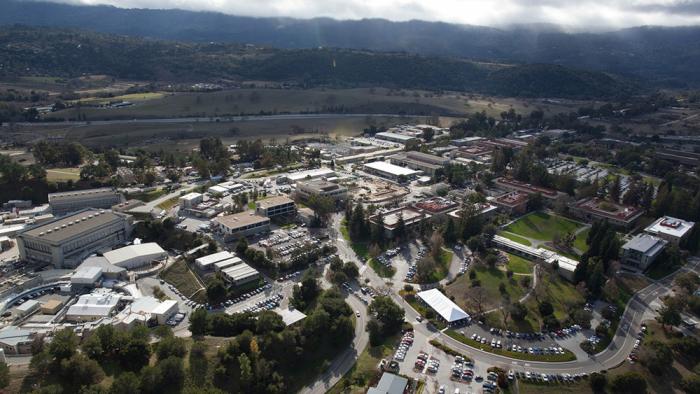 SLAC has a new director: X-ray scientist Chi-Chang Kao. Kao currently serves as Associate Laboratory Director for SLAC's Stanford Synchrotron Radiation Lightsource and Acting Associate Laboratory Director for the lab's Photon Science directorate. He will assume the directorship on November 1.
SLAC has a new director: X-ray scientist Chi-Chang Kao. Kao currently serves as Associate Laboratory Director for SLAC's Stanford Synchrotron Radiation Lightsource and Acting Associate Laboratory Director for the lab's Photon Science directorate. He will assume the directorship on November 1. Gravitational waves were first predicted by Albert Einstein almost a century ago, but scientists have yet to observe them directly.
Gravitational waves were first predicted by Albert Einstein almost a century ago, but scientists have yet to observe them directly. brown paper blue ink About me , Antarctica , and taking the long way home RSS Follow Blog via Email Enter your email address to follow this blog and receive notifications of new posts by . email Join 68 other followers Stuff I blog about Africa Antarctica Asia Border Crossing Cambodia Camping CAT equipment Centennial China Christchurch Contractor Earthquake Europe flying Food Home Jens Stoltenberg Leonardo's Basement Lockheed Lockheed Martin McMurdo MedEvac Minneapolis Minnesota Music News New Zealand Norway Palmer Photography Photos Roald Amundsen Robert Falcon Scott snow South Africa Southeast Asia South Pole Tanzania Thailand Travel Travel Health Weather Zambia Zanzibar Zimbabwe Archives October 2012 September 2012 August 2012 July 2012 May 2012 April 2012 March 2012 February 2012
brown paper blue ink About me , Antarctica , and taking the long way home RSS Follow Blog via Email Enter your email address to follow this blog and receive notifications of new posts by . email Join 68 other followers Stuff I blog about Africa Antarctica Asia Border Crossing Cambodia Camping CAT equipment Centennial China Christchurch Contractor Earthquake Europe flying Food Home Jens Stoltenberg Leonardo's Basement Lockheed Lockheed Martin McMurdo MedEvac Minneapolis Minnesota Music News New Zealand Norway Palmer Photography Photos Roald Amundsen Robert Falcon Scott snow South Africa Southeast Asia South Pole Tanzania Thailand Travel Travel Health Weather Zambia Zanzibar Zimbabwe Archives October 2012 September 2012 August 2012 July 2012 May 2012 April 2012 March 2012 February 2012 Home Scientific Outreach About What's New Contact Careers Perimeter Scholars International Support Français SCIENTIFIC Research Areas Seminars PIRSA Conferences Courses Positions Publications Visitors Research Staff Shuttle Service OUTREACH About General Public Teachers Students Public Lectures Arts and Culture ABOUT What's New Careers People Internal Contact Us 31 Caroline St . N . Waterloo Ontario , Canada N2L 2Y5 Tel : 519 569-7600 Fax : 519 569-7611 HEADLINES more POSTDOC APPLICATIONS NOW BEING ACCEPTED Recruitment has started for postdoctoral fellowships to being in fall 2013. RECRUITING ASSOCIATE FACULTY WITH WESTERN Perimeter and Western are recruiting for a joint position in theoretical physics . WORLD'S FIRST GLIMPSE OF BLACK HOLE LAUNCHPAD Science Express features a paper by the
Home Scientific Outreach About What's New Contact Careers Perimeter Scholars International Support Français SCIENTIFIC Research Areas Seminars PIRSA Conferences Courses Positions Publications Visitors Research Staff Shuttle Service OUTREACH About General Public Teachers Students Public Lectures Arts and Culture ABOUT What's New Careers People Internal Contact Us 31 Caroline St . N . Waterloo Ontario , Canada N2L 2Y5 Tel : 519 569-7600 Fax : 519 569-7611 HEADLINES more POSTDOC APPLICATIONS NOW BEING ACCEPTED Recruitment has started for postdoctoral fellowships to being in fall 2013. RECRUITING ASSOCIATE FACULTY WITH WESTERN Perimeter and Western are recruiting for a joint position in theoretical physics . WORLD'S FIRST GLIMPSE OF BLACK HOLE LAUNCHPAD Science Express features a paper by the TRIUMF Canada's National Laboratory for Particle and Nuclear Physics Canada's national laboratory for particle and nuclear physics Laboratoire national canadien pour la recherche en physique nucléaire et en physique des particules Home About TRIUMF Research Administration Login Directory Visiting TRIUMF Tours of TRIUMF TRIUMF House Parking Information For Students Teachers For Visiting Researchers Upcoming Events Upcoming Seminars Lectures Upcoming Conferences Global Photowalk 2012 Multimedia Videos Reports Newsletter Library Publications Office Style Guide Press Room News Releases Medical Isotopes Fact Sheets Media Contact Speakers Bureau Careers at TRIUMF TRIUMF House Contact Us Our Future Vision The ARIEL Facility Innovation Partner Connect Owned and Operated as a joint venture by
TRIUMF Canada's National Laboratory for Particle and Nuclear Physics Canada's national laboratory for particle and nuclear physics Laboratoire national canadien pour la recherche en physique nucléaire et en physique des particules Home About TRIUMF Research Administration Login Directory Visiting TRIUMF Tours of TRIUMF TRIUMF House Parking Information For Students Teachers For Visiting Researchers Upcoming Events Upcoming Seminars Lectures Upcoming Conferences Global Photowalk 2012 Multimedia Videos Reports Newsletter Library Publications Office Style Guide Press Room News Releases Medical Isotopes Fact Sheets Media Contact Speakers Bureau Careers at TRIUMF TRIUMF House Contact Us Our Future Vision The ARIEL Facility Innovation Partner Connect Owned and Operated as a joint venture by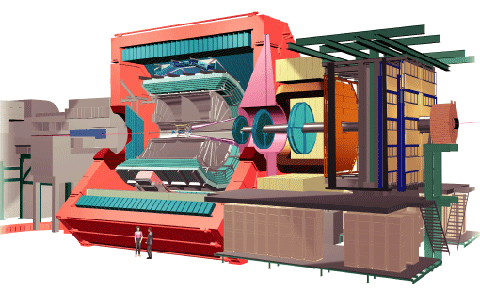 : Home Sitemap Contact us this site all CERN CERN European Organization for Nuclear Research The Large Hadron Collider About us Science Research The LHC People Why the LHC How the LHC works Heavy-ion physics The LHC Experiments ALICE ATLAS CMS LHCb TOTEM LHCf Computing The safety of the LHC Facts and figures LHC Milestones ALICE A Large Ion Collider Experiment For the ALICE experiment , the LHC will collide lead ions to recreate the conditions just after the Big Bang under laboratory conditions . The data obtained will allow physicists to study a state of matter known as quark‑gluon plasma , which is believed to have existed soon after the Big . Bang All ordinary matter in today's Universe is made up of atoms . Each atom contains a nucleus composed of protons and neutrons , surrounded by a
: Home Sitemap Contact us this site all CERN CERN European Organization for Nuclear Research The Large Hadron Collider About us Science Research The LHC People Why the LHC How the LHC works Heavy-ion physics The LHC Experiments ALICE ATLAS CMS LHCb TOTEM LHCf Computing The safety of the LHC Facts and figures LHC Milestones ALICE A Large Ion Collider Experiment For the ALICE experiment , the LHC will collide lead ions to recreate the conditions just after the Big Bang under laboratory conditions . The data obtained will allow physicists to study a state of matter known as quark‑gluon plasma , which is believed to have existed soon after the Big . Bang All ordinary matter in today's Universe is made up of atoms . Each atom contains a nucleus composed of protons and neutrons , surrounded by a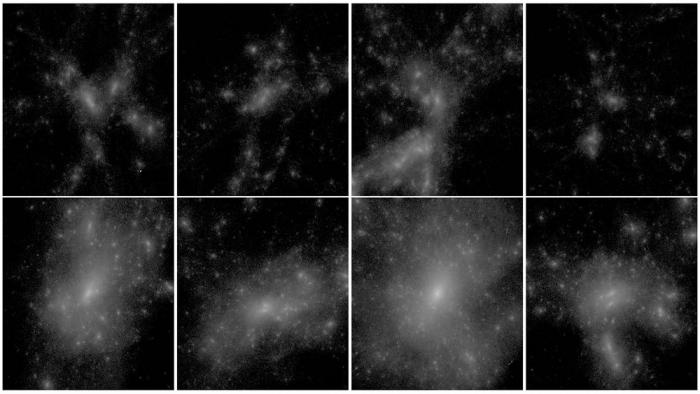 Scientists from the groups of professors Risa Wechsler and Tom Abel at the Kavli Institute for Particle Astrophysics and Cosmology, an institute run jointly by Stanford University and SLAC National Accelerator Laboratory, are busily crafting enough computer simulation tools to outfit a major stadium tour—if simulations were musical instruments and the KIPAC scientists a supergroup. They’ve managed to meld their different strains of software into the type of melody that dark matter just might dance to.
Scientists from the groups of professors Risa Wechsler and Tom Abel at the Kavli Institute for Particle Astrophysics and Cosmology, an institute run jointly by Stanford University and SLAC National Accelerator Laboratory, are busily crafting enough computer simulation tools to outfit a major stadium tour—if simulations were musical instruments and the KIPAC scientists a supergroup. They’ve managed to meld their different strains of software into the type of melody that dark matter just might dance to.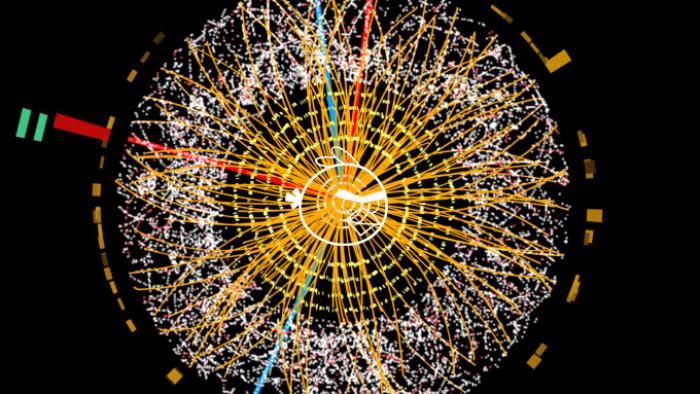 CERN and Angry Birds-creator Rovio announced last Friday that they will team up to produce a learning program for children between 3 and 8 years old.
The partnership will focus on the Angry Birds Playground brand, which is designed to make learning about physics fun and accessible for all ages. It is based on Finland’s national kindergarten curriculum.
CERN and Angry Birds-creator Rovio announced last Friday that they will team up to produce a learning program for children between 3 and 8 years old.
The partnership will focus on the Angry Birds Playground brand, which is designed to make learning about physics fun and accessible for all ages. It is based on Finland’s national kindergarten curriculum.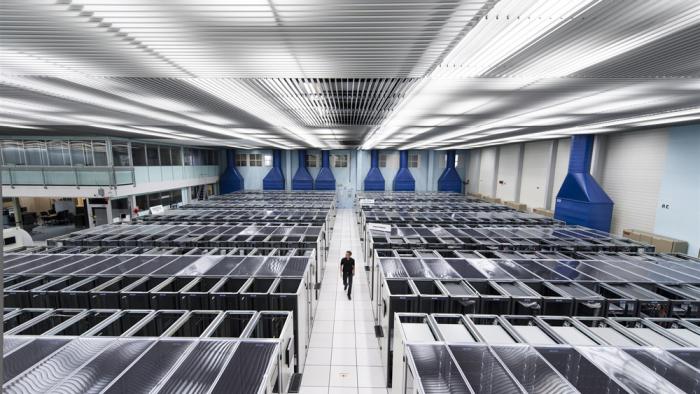 Anyone in the world with a computer can contribute to research at CERN. Through the LHC@Home project, volunteers can offer up spare computing power to simulate and process collisions happening inside the Large Hadron Collider.
CERN recently improved the program with a new feature that helps scientists monitor the system that distributes work among volunteers’ computers. But the new feature is not the work of a CERN employee; it is the work of a college undergraduate who had the chance to work with CERN through the 2012 Google Summer of Code.
Anyone in the world with a computer can contribute to research at CERN. Through the LHC@Home project, volunteers can offer up spare computing power to simulate and process collisions happening inside the Large Hadron Collider.
CERN recently improved the program with a new feature that helps scientists monitor the system that distributes work among volunteers’ computers. But the new feature is not the work of a CERN employee; it is the work of a college undergraduate who had the chance to work with CERN through the 2012 Google Summer of Code.
 American Physical Society Sites APS Journals PhysicsCentral Physics Become an APS Member Contact Us Division of Particles Fields Governance Newsletters Meetings APS Fellowship Prizes Awards Resources Email Print Share Division of Particles Fields The objective of the Division is the study of fundamental particles and fields , their structure , their interactions and interrelationships , the design and development of high energy accelerators , and the design and development of instrumentation techniques for high energy . physics News Community Planning Meetings starting Oct 2012 DPF Newsletter APS Multidivisional Neutrino Study A Joint Study on the Future of Neutrino Physics : The Neutrino Matrix Upcoming Meetings APS April Meeting 2013 April 13-16, 2013 APS April Meeting 2014 April 5-8,
American Physical Society Sites APS Journals PhysicsCentral Physics Become an APS Member Contact Us Division of Particles Fields Governance Newsletters Meetings APS Fellowship Prizes Awards Resources Email Print Share Division of Particles Fields The objective of the Division is the study of fundamental particles and fields , their structure , their interactions and interrelationships , the design and development of high energy accelerators , and the design and development of instrumentation techniques for high energy . physics News Community Planning Meetings starting Oct 2012 DPF Newsletter APS Multidivisional Neutrino Study A Joint Study on the Future of Neutrino Physics : The Neutrino Matrix Upcoming Meetings APS April Meeting 2013 April 13-16, 2013 APS April Meeting 2014 April 5-8, American Physical Society Sites APS Journals PhysicsCentral Physics Login Become a Member Contact Us Journals of the American Physical Society APS News Physics Physics Today Capitol Hill Quarterly Other APS Publications Reciprocal Society Newsletters March Meeting April Meeting Meeting Calendar Abstract Submission Archives of the Bulletin of the American Physical Society Policies Guidelines Meeting Presentations Virtual Press Rooms Education International Affairs Physics for All Women in Physics Minorities in Physics Prizes , Awards Fellows Join APS Renew Membership Member Directory My Member Profile Member Services APS Units Issues Reports Studies APS Statements Advocacy Tools Advocacy Resources Fellowships Fellows Contact APS Public Affairs Physics Jobs Becoming a Physicist Career
American Physical Society Sites APS Journals PhysicsCentral Physics Login Become a Member Contact Us Journals of the American Physical Society APS News Physics Physics Today Capitol Hill Quarterly Other APS Publications Reciprocal Society Newsletters March Meeting April Meeting Meeting Calendar Abstract Submission Archives of the Bulletin of the American Physical Society Policies Guidelines Meeting Presentations Virtual Press Rooms Education International Affairs Physics for All Women in Physics Minorities in Physics Prizes , Awards Fellows Join APS Renew Membership Member Directory My Member Profile Member Services APS Units Issues Reports Studies APS Statements Advocacy Tools Advocacy Resources Fellowships Fellows Contact APS Public Affairs Physics Jobs Becoming a Physicist Career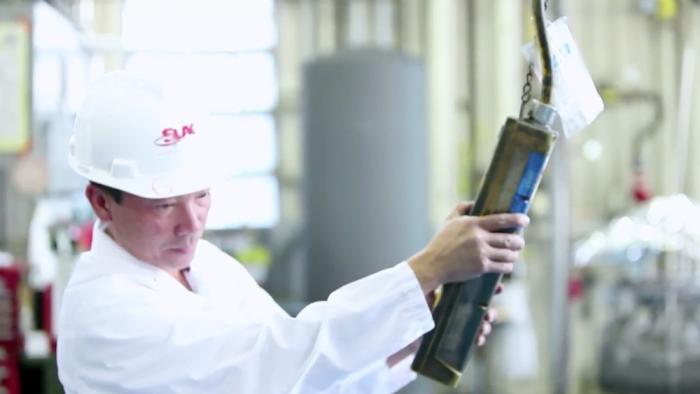 Every year, particle accelerators play an essential role in scientific discovery, industry and even medicine. But what does it take to make an accelerator run? This video, produced by SLAC National Accelerator Laboratory, takes you into the department that builds klystrons, the devices that propel particles to nearly the speed of light within SLAC’s accelerators.
Every year, particle accelerators play an essential role in scientific discovery, industry and even medicine. But what does it take to make an accelerator run? This video, produced by SLAC National Accelerator Laboratory, takes you into the department that builds klystrons, the devices that propel particles to nearly the speed of light within SLAC’s accelerators.  Ryan Campbell, an ecologist with Fermilab’s Roads and Grounds Group, leans back in his office chair on a hot, humid Illinois summer morning. His gaze fixes on a large aerial photograph of the Fermilab property, on which he’d placed nametags on some of the large swaths of green fields and forests.
Ryan Campbell, an ecologist with Fermilab’s Roads and Grounds Group, leans back in his office chair on a hot, humid Illinois summer morning. His gaze fixes on a large aerial photograph of the Fermilab property, on which he’d placed nametags on some of the large swaths of green fields and forests.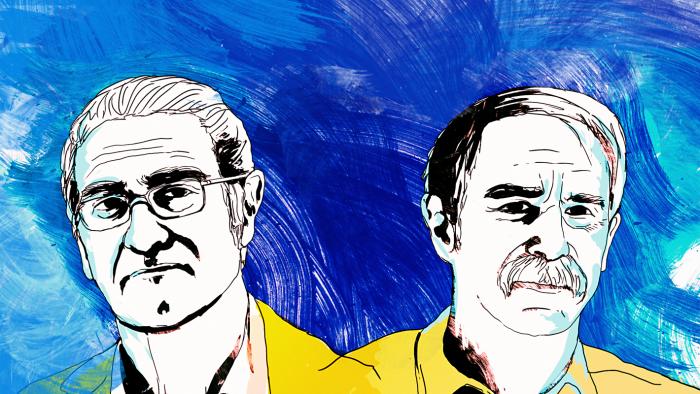 The Royal Swedish Academy of Sciences has awarded the 2012 Nobel Prize in physics to two scientists who developed groundbreaking experimental methods that are the first steps toward building a new type of supercomputer known as a quantum computer. Their research has also led to the construction of extremely precise clocks that may replace present-day atomic clocks.
The Royal Swedish Academy of Sciences has awarded the 2012 Nobel Prize in physics to two scientists who developed groundbreaking experimental methods that are the first steps toward building a new type of supercomputer known as a quantum computer. Their research has also led to the construction of extremely precise clocks that may replace present-day atomic clocks. University of Wisconsin-Madison Search Home About Us IceCube Explained Meet the Collaboration FAQ Fun Facts Project Staff Directory Committees Science All About Neutrinos IceCube in Depth South Pole to Science Publications Construction Timeline Data Access Documents and Reviews Monthly Reports 2010 IceCube Review 2008 IceCube Update ICRC 2009 Contributions Preliminary Design Doc 1st Year Performance Yearly Statistics Acronyms Life Pole Daily Life Working at the Pole Antarctic Animals Antarctic Tourism Antarctic Weather Edu Outreach Events Calendar Request a Visit Student Programs REU Upward Bound ITA Activities Ice Drilling Cloud Chamber Popcorn Neutrinos Micrometeorites Partners Collaborating Orgs Governance Document Current Authors Organization Chart Funding Agencies Acceptable Use
University of Wisconsin-Madison Search Home About Us IceCube Explained Meet the Collaboration FAQ Fun Facts Project Staff Directory Committees Science All About Neutrinos IceCube in Depth South Pole to Science Publications Construction Timeline Data Access Documents and Reviews Monthly Reports 2010 IceCube Review 2008 IceCube Update ICRC 2009 Contributions Preliminary Design Doc 1st Year Performance Yearly Statistics Acronyms Life Pole Daily Life Working at the Pole Antarctic Animals Antarctic Tourism Antarctic Weather Edu Outreach Events Calendar Request a Visit Student Programs REU Upward Bound ITA Activities Ice Drilling Cloud Chamber Popcorn Neutrinos Micrometeorites Partners Collaborating Orgs Governance Document Current Authors Organization Chart Funding Agencies Acceptable Use